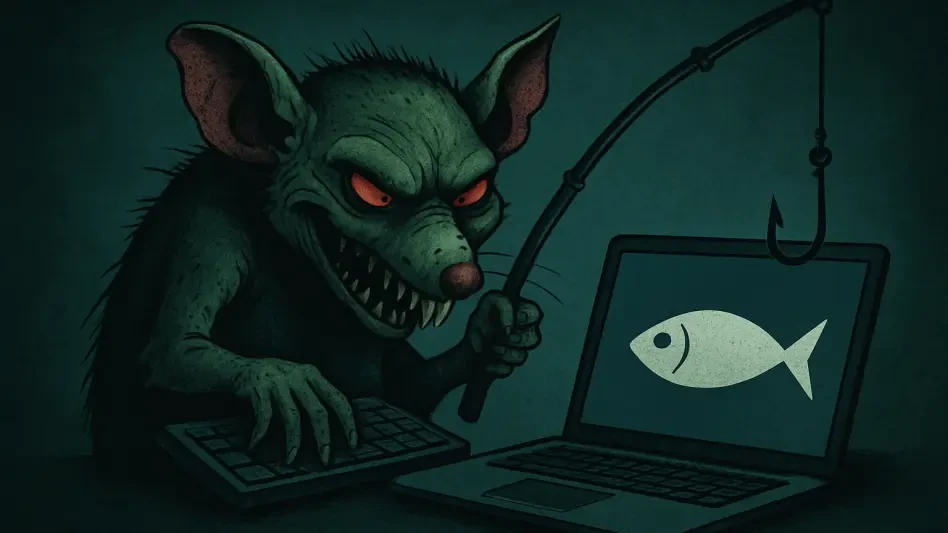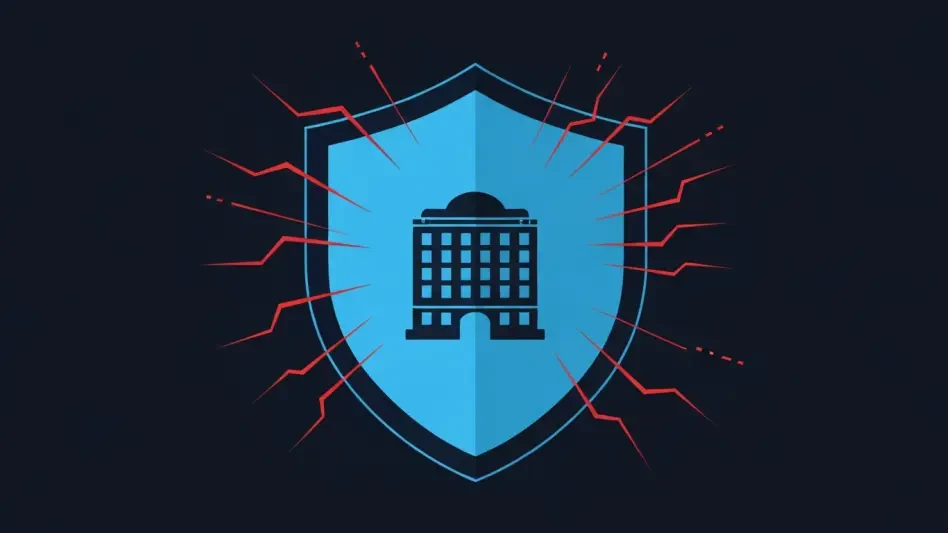In an alarming development for cybersecurity, a sophisticated phishing campaign has emerged, targeting Microsoft Windows users with a dangerous Remote Access Trojan known as MostereRAT. This malicious software, which has evolved significantly over recent years, is being deployed through deceptive emails that primarily focus on Japanese users, leveraging cunning social engineering tactics to trick recipients into compromising their systems. Disguised as legitimate business inquiries, these emails lead unsuspecting individuals to malicious websites that initiate automatic downloads of infected files. Once installed, MostereRAT grants attackers full control over compromised devices, enabling data theft, lateral network movement, and a host of other damaging activities. The severity of this threat lies not only in its technical sophistication but also in the challenge of tracing its origins, as no specific threat actor has been identified. This campaign underscores the urgent need for heightened vigilance and robust defensive strategies in the face of evolving cyber threats.
The Mechanics of the Attack
A closer examination of this phishing campaign reveals a meticulously crafted approach designed to exploit human trust and bypass traditional security measures. The attack begins with carefully worded emails that mimic legitimate business communications, often targeting Japanese users with tailored content to increase the likelihood of engagement. These messages lure recipients to fraudulent websites where malicious files, frequently hidden within seemingly harmless Word documents, are automatically downloaded. Once a user interacts with the file, often prompted to execute embedded archives, the infection process kicks off. MostereRAT then deploys a multi-stage payload, using complex techniques to embed itself into the system. This initial breach is just the beginning, as the malware sets the stage for deeper infiltration by creating hidden services and establishing persistence, making it a formidable challenge for even advanced detection tools to identify and neutralize before significant damage occurs.
Beyond the initial deception, MostereRAT demonstrates an alarming capacity for evasion and control that amplifies its threat level. The malware employs a payload developed in Easy Programming Language (EPL), which obscures its operations and complicates analysis by security software. It runs processes with elevated TrustedInstaller privileges, a tactic that allows it to manipulate critical system components while remaining undetected. Additionally, it disables antivirus tools by blocking related traffic and uses mutual TLS (mTLS) encryption for secure communication with Command and Control (C2) servers. This encryption method, which authenticates both client and server, adds a layer of protection for the attackers, making interception of their activities extraordinarily difficult. The combination of these advanced techniques ensures that once a system is compromised, the malware can operate with near impunity, executing commands, capturing sensitive data, and preparing for further exploitation across connected networks.
Impact and Capabilities of MostereRAT
The capabilities of MostereRAT extend far beyond mere access, posing a severe risk to both individual users and organizations reliant on Windows platforms. Once embedded in a system, the malware provides attackers with comprehensive control, enabling keylogging to capture sensitive inputs, screen capture to monitor user activity, and file and process management to manipulate critical data. Early bird injection techniques allow for memory-based execution, further evading detection by traditional security solutions. Moreover, the malware deploys legitimate remote access tools such as AnyDesk, TightVNC, and RDP Wrapper, which often go unnoticed by endpoint detection and response (EDR) systems due to their trusted status. These tools facilitate interactive control and data exfiltration, allowing attackers to siphon off valuable information or use the compromised system as a foothold for broader network infiltration, amplifying the potential for widespread operational disruption.
The impact of such a breach can be catastrophic, as MostereRAT is designed to cripple essential Windows security features and disable system updates, leaving devices vulnerable to further attacks. This ability to neutralize built-in defenses means that even patched systems can be rendered defenseless, increasing the likelihood of significant data breaches and financial losses. The malware’s focus on persistence ensures that it remains active even after initial detection attempts, often requiring extensive remediation efforts to fully remove. For organizations, the risk of lateral movement within networks is particularly concerning, as a single infected device can serve as a gateway to compromise entire infrastructures. The high threat rating assigned to this malware by cybersecurity experts reflects the profound danger it poses, emphasizing the need for immediate action to safeguard systems against such sophisticated intrusions.
Challenges in Attribution and Defense
One of the most perplexing aspects of the MostereRAT campaign is the absence of clear attribution to a specific threat actor or known malware family. This lack of identifiable origin complicates efforts to predict or prevent future iterations of the attack, as cybersecurity teams are left without a definitive target to focus their defenses against. The anonymity of the perpetrators suggests that this campaign may be part of a larger, unidentified cybercrime network, capable of adapting and evolving its tactics over time. Such uncertainty underscores the limitations of reactive security measures and highlights the importance of proactive strategies that do not rely solely on identifying the source of a threat. Instead, defenses must be built to withstand a wide range of attack vectors, ensuring resilience even when the enemy remains in the shadows, continuously refining their methods to exploit new vulnerabilities.
Compounding the challenge is the growing complexity of phishing campaigns and RATs, as evidenced by MostereRAT’s strategic design for long-term exploitation. Cybersecurity experts have noted that traditional security measures often fall short against such advanced threats, advocating for a layered defense approach that addresses vulnerabilities at every stage of the attack lifecycle. Recommendations include hardening email defenses to filter out deceptive messages, restricting egress traffic to prevent unauthorized communications, and monitoring for anomalous TLS fingerprints that might indicate C2 activity. Additionally, removing local administrator privileges and implementing strict controls over remote access tools can significantly reduce the attack surface. Browser security policies to prevent automatic downloads and comprehensive monitoring of system behaviors, particularly Windows Filtering Platform (WFP) operations, are also critical steps in building a robust defense against this evolving threat landscape.
Strengthening Cybersecurity Posture
Reflecting on the emergence of MostereRAT, it becomes evident that the campaign has set a new benchmark for phishing sophistication, exploiting both human error and technical vulnerabilities with devastating precision. The malware’s ability to evolve from a banking Trojan into a full-featured RAT demonstrates a clear intent to maximize damage through extended control and evasion tactics. Experts have repeatedly stressed the misuse of legitimate tools as a blind spot in many security frameworks, revealing a critical gap that attackers have exploited with ease. The consensus among professionals points to the inadequacy of conventional defenses, urging a shift toward more dynamic and multi-layered strategies that can adapt to the unpredictable nature of modern cyber threats. This incident serves as a stark reminder of the relentless innovation in malware design, pushing organizations to rethink their approach to cybersecurity in a landscape where threats continually outpace traditional solutions.
Looking ahead, actionable steps emerge as a priority to counter the lingering effects of such campaigns and prevent future breaches. Organizations should invest in user education programs to raise awareness about phishing tactics, ensuring employees can recognize and report suspicious emails before they cause harm. Implementing allowlisting for approved applications and enforcing browser security policies can further minimize the risk of unauthorized downloads or access. Cybersecurity teams must also prioritize continuous monitoring for suspicious activities, such as TrustedInstaller token abuse, and isolate compromised hosts swiftly to limit damage. By adopting a proactive mindset and integrating expert recommendations—such as monitoring system behaviors and restricting remote access tools—businesses can build resilience against sophisticated threats. These measures, combined with a commitment to staying ahead of evolving attack methodologies, offer a pathway to fortify defenses and protect critical systems from the next wave of cyber dangers.








